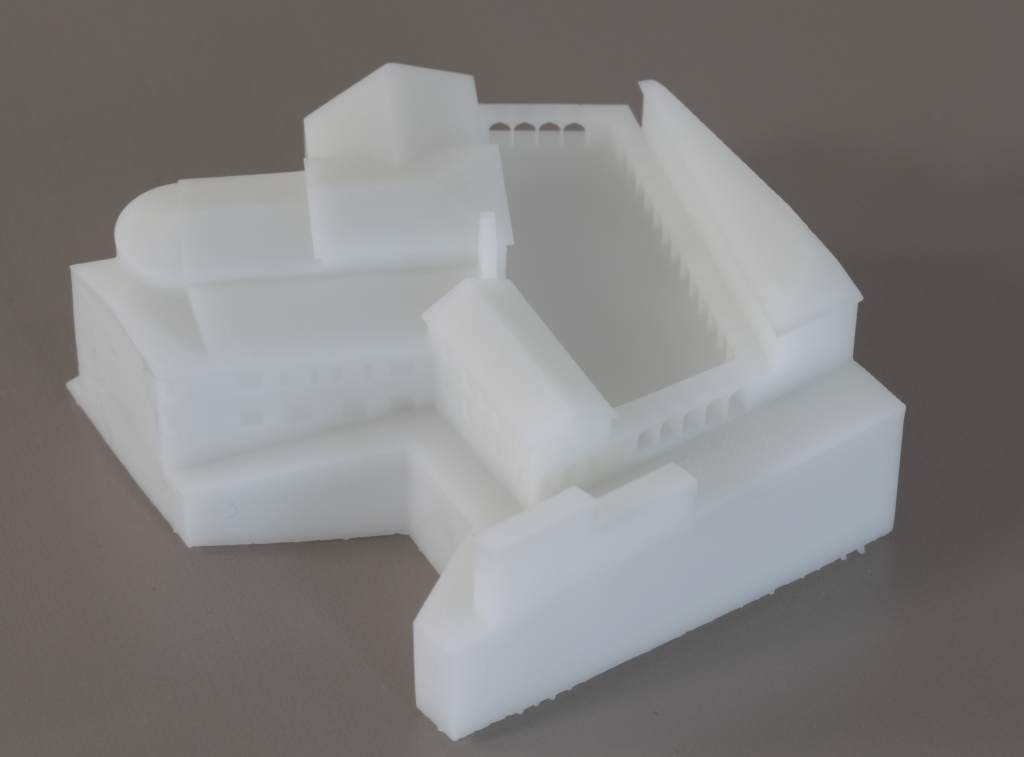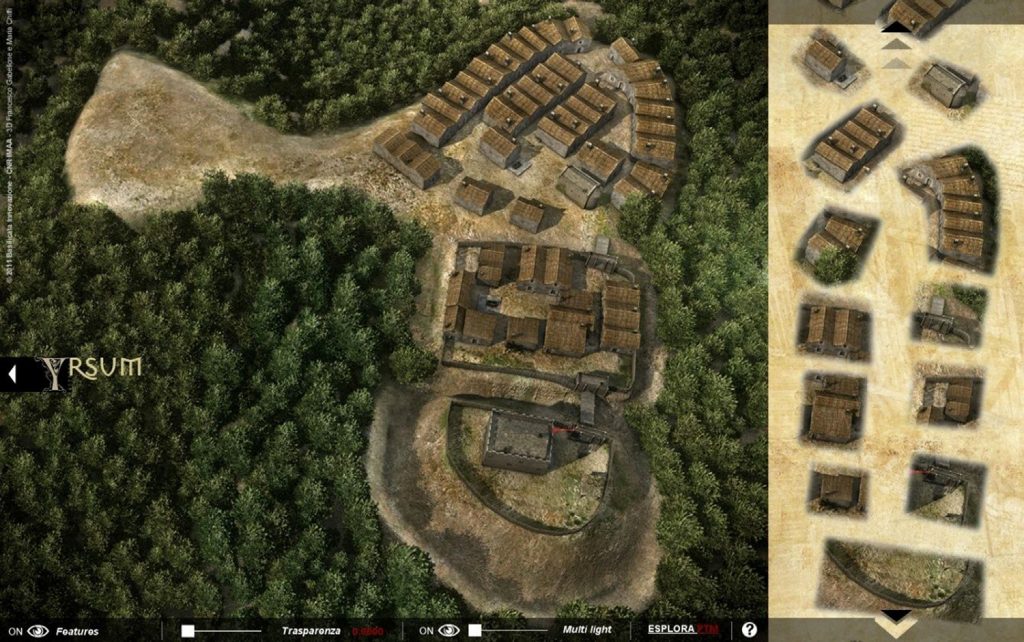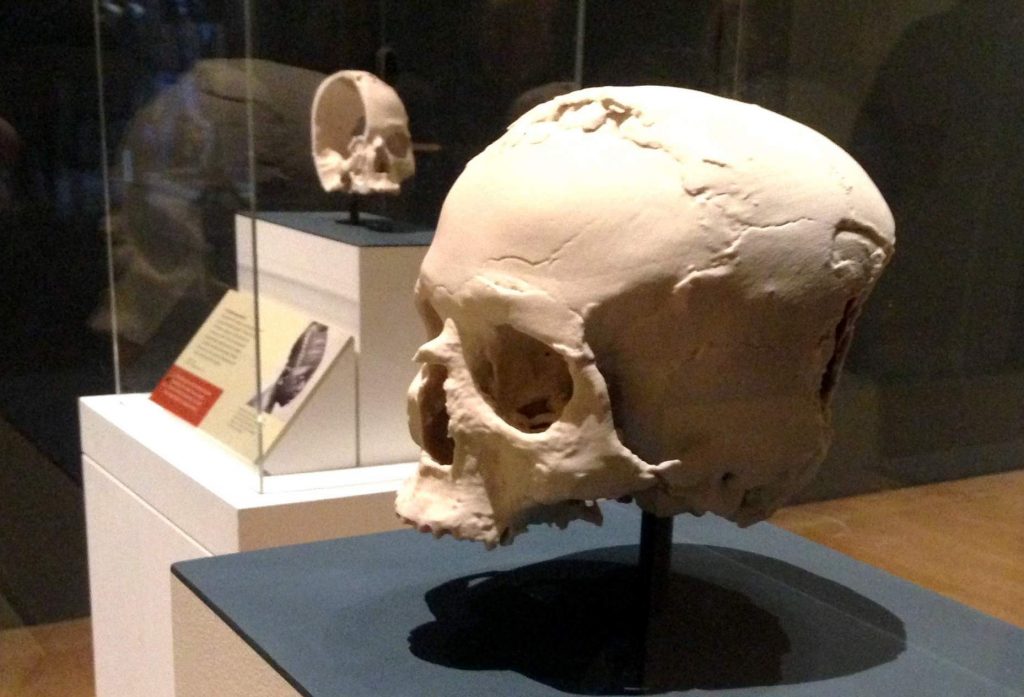Virtual reality simulations and “serious games” developed by historical researcher and architect Francesco Gabellone serve to revive the history of lost villages and archaeological sites. Gabellone’s projects primarily use LiDAR 3D scanning and his research resounds with conservation and cultural heritage projects using 3D printing.

Serious gaming in the medieval Italian village of Yrsum
A paper co-authored by Gabellone, From remote sensing to a serious game: Digital reconstruction of an abandoned medieval village in Southern Italy, concludes,
The high number of the abandoned villages and the difficulty to identify many of them, […] make necessary to develop new ways and tools to investigate and valorize the witnesses of this little-known history.
The ‘serious game’ developed in this research is set in southern Italy’s medieval village Yrsum, destroyed and abandoned in 1370. The site of the village today appears only as green fields at the joining of the Bradano and Basentello rivers.
Digital reconstruction of Yrsum for the purpose of Gabellone’s game is possible through combined information from historical documents, satellite imagery, and a full LiDAR survey of about 312.5m of the site.

From this information, the researchers were able to discern a motte and bailey castle in the relief of the land, and the foundations of two urban settlements.
In the game, players explore Yrsum through a series of puzzles based on knowledge of the construction, and rebuild the remains of the town.

Work supported by Italy’s National Research Council
Since the digital reconstruction of Yrsum, Gabellone has created virtual walkthroughs of other sites of historical importance. The Tomb of Nefertiti is one site re-imagined in a video by Gabellone available on his YouTube channel.
Tomb of Nefertari – TRAILER by Francesco Gabellone on YouTube
It’s encouraging to see that Gabellone’s work is supported by Italy’s National Research Council (the Consiglio Nazionale delle Ricerche, or CNR) in Rome, and IBAM (L’Istituto per i Beni Archeologi e Monumentali) an Italian institution for archaeological research.
The long term aim of IBAM is, “to better share scientific data and disseminate in a more effective way the understanding of monuments and archaeological contexts”.
Other research and conservation projects combine 3D scanning techniques such as LiDAR with 3D printing to give a tactile exploration of the concepts.
3D printed skulls at The British Museum
The British Museum in London have recreated the Stone Age Jericho Skull using 3D printing from 3D CT scan data. The gypsum models give visitors an idea of how the skull would have looked thousands of years ago before undergoing stresses under the earth.

Remembering the devastated town of Amatrice
In August 2016, the town of Amatrice was destroyed by a magnitude 6.2 earthquake and more recently the region was again recently hit by further earthquakes. In homage to the lost town, Italian SLA 3D printers DWS made a 3D model of Amatrice in resin, on their desktop XFAB systems. The model now belongs to the Municipality of Amatrice as an act of support and remembrance.

Enhancing education
In my opinion, 3D technologies enhance an understanding of concepts and histories by providing a perspective other than the hard facts.
In education, such 3D resources can be invaluable for inspiring knowledge, which is reflected in the trend for dedicated 3D printing labs and STEAM programs in schools worldwide.
Such research and processes are clearly highly-valued by governmental bodies, and companies who seek to make a valuable contribution to knowledge and technology.
For more stories on 3D scanning, printing and cultural heritage, you can stay up to date by finding us on Facebook and Twitter, or subscribing to our newsletter.
The 3D Printing Awards are also open for nominations here.
Featured image shows the serious game recreation of the town of Yrsum. Image via: Gabellone et al.


